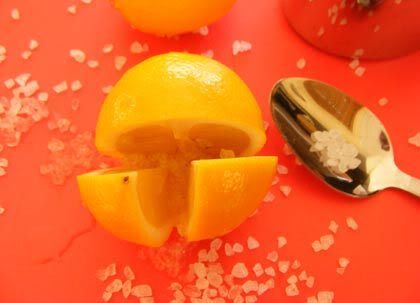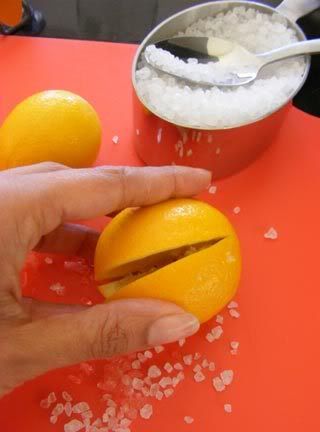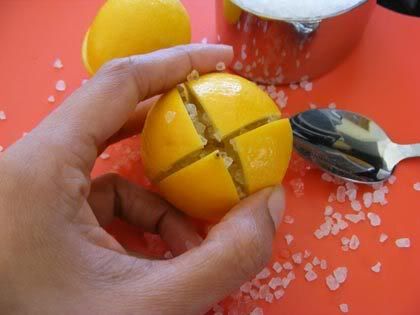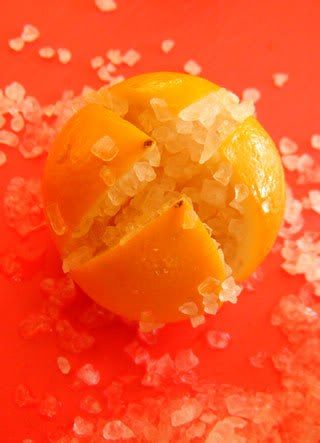[to the tune of Sound of Silence, by Simon and Garfunkel]
Hello insomnia my old 'friend'.
You've come to taunt me yet again?
I will fight you off with myyyy red wine,
And surf the web just oooone more time.
As my vision, it grows blurryyyy with fatigue,
Longing for sleep,
And the rooooad outside ... grows silent.
Art. Goth. Steampunk. Etiquette. Helpful Tips. Green Hints. Natural History. Recipes. Reviews. Links. Curious & Vintage Clippings. Odd Objects. Macros & Vintage LOLs
Tuesday, June 28, 2011
Friday, June 24, 2011
Wonderful cook!
I sat on the tram to work earlier this week with 3 older ladies, who I think I've sat with before or possibly served in my shop. Anyhow they were chatting about how many cookbooks and cooking magazines they had and didn't use, how they'd been sorting through them. One lady said after talking about the assorted magazines she had accumulated around the house said
"I've got _so_ many! When I die they will think 'She must have been a _wonderful_ cook!', when all I've got is a wonderful collection [chuckles]".
"I've got _so_ many! When I die they will think 'She must have been a _wonderful_ cook!', when all I've got is a wonderful collection [chuckles]".
Funky little lion logo
This is the first of a short series of images scanned from the 1929 annual of The Draper of Australasia. Sure I could have scanned a great many images of the fashion of the time, but let's face it I think we're all quite familiar with that sort of thing. This blog is more about the quirky rather than the quaint. I don't find 1920s fashion particularly exciting anyway.

Trademark, John King and Sons and Glasgow, drapers specialising in curtains
He looks like he's holding up his thistle with a grin, a spring in his step, a slightly flamboyant curl to his mane, and tiny round sunglasses perched on his nose.

Trademark, John King and Sons and Glasgow, drapers specialising in curtains
He looks like he's holding up his thistle with a grin, a spring in his step, a slightly flamboyant curl to his mane, and tiny round sunglasses perched on his nose.
Sunday, June 19, 2011
Preserved Moroccan style lemons.
This recipe is for a basic Moroccan style preserved lemon. The actual recipe is very easy but the technique for stuffing the lemons can be fiddly and potentially wasteful so I'd like to visually share my technique with you to help you get the best result and prettiest jars!
The finished product goes beautifully with meat and fish. Most Morrocan recipes call for only the rinsed and finely choped rind but if you like things extra lemony you can try using the pulp as well in your cooking.
You will need:
1 wide mouthed 1L jar, sterilised*
up to 12 or so, small, thin skinned lemons
1/2 tsp peppercorns
1 bay leaf
1/2 cup rock salt
Some of the lemons will be preserved in the jar/s others will be juiced only. Start with your preserving lemons first which the instructions will refer to.
Gently wash lemons in warm water with a soft bristled brush. This is to remove the natural waxes on the skin.
Hold lemon, stalk end down and use a small knife cut into lengthwise quarters but ensure quarters are still joined at the base like the petals of a flower.
Over your chopping board, put a small amount of rock salt into the lemon quarters to seperate them from each other like this:

Hold the lemon on its side and prise the quarters apart to fill. Use the side of the spoon to fill and push in the salt. Give it a squeeze to hold in place as you continue to repeat between the other sections.

This isn't full yet! I have found it's best to gradually stuff them with salt rather than try to get it all in at once.

A fully stuffed lemon.

Put the filled lemons into the jar one by one. You should squish them in to truly fill the jar and release some of the juice. When the jar is half full add the peppercorns and bayleaf. Once it's full of lemons you can juice the remaining lemons. Add the remaining salt, including any salt spilling from the stuffing process, to the jar. Cover lemons with lemon juice. Close and gently shake. Store in a cool, dark place for 6 weeks, shaking the jar once a week. The liquid should eventually clear up and the lemon pith will turn yellow. Then, it's ready to cook with! Store in refridgerator for around 6 months.

You can divide the ingredients between more than one jar so there's one for you and one for a gift. I've used a 500ml, La Parfait jar and an old olive jar. The tall jar should fit another lemon to really cram it full but I wanted it to be pretty :P

*STERILISING JARS must be done to ensure the shelf life and food safety of your preserve.
There are a few ways to do it, but never use a towel to dry! Also note that this is only part of what you need to do when making jam or other hot mixtures, in which case the boiling water bath method is necessary.
Anyhoo:
1 You can wash them in hot soapy water then dry them upside down on a clean tray, in a cool oven (100-130C) for 15 minutes. OR
2 My manager who has made prize winning jellies and preserves recommends the microwave technique because it's quick and easy. Fill jars with hot water and microwave for a couple of minutes. Then dry in the oven as above or for this recipe, empty and allow to cool a little. OR
3 Putting jars through the dishwasher on a hot cycle will also sterilise them. Immerse the rubber seals and metal parts in boiling water for a few minutes until you're ready to use them. OR
4 Fully immerse in boiling water for 10 minutes then oven dry.
Metal lids and rubber seals can be immersed in boiling water for 5 minutes.
The finished product goes beautifully with meat and fish. Most Morrocan recipes call for only the rinsed and finely choped rind but if you like things extra lemony you can try using the pulp as well in your cooking.
You will need:
1 wide mouthed 1L jar, sterilised*
up to 12 or so, small, thin skinned lemons
1/2 tsp peppercorns
1 bay leaf
1/2 cup rock salt
Some of the lemons will be preserved in the jar/s others will be juiced only. Start with your preserving lemons first which the instructions will refer to.
Gently wash lemons in warm water with a soft bristled brush. This is to remove the natural waxes on the skin.
Hold lemon, stalk end down and use a small knife cut into lengthwise quarters but ensure quarters are still joined at the base like the petals of a flower.
Over your chopping board, put a small amount of rock salt into the lemon quarters to seperate them from each other like this:

Hold the lemon on its side and prise the quarters apart to fill. Use the side of the spoon to fill and push in the salt. Give it a squeeze to hold in place as you continue to repeat between the other sections.

This isn't full yet! I have found it's best to gradually stuff them with salt rather than try to get it all in at once.

A fully stuffed lemon.

Put the filled lemons into the jar one by one. You should squish them in to truly fill the jar and release some of the juice. When the jar is half full add the peppercorns and bayleaf. Once it's full of lemons you can juice the remaining lemons. Add the remaining salt, including any salt spilling from the stuffing process, to the jar. Cover lemons with lemon juice. Close and gently shake. Store in a cool, dark place for 6 weeks, shaking the jar once a week. The liquid should eventually clear up and the lemon pith will turn yellow. Then, it's ready to cook with! Store in refridgerator for around 6 months.

You can divide the ingredients between more than one jar so there's one for you and one for a gift. I've used a 500ml, La Parfait jar and an old olive jar. The tall jar should fit another lemon to really cram it full but I wanted it to be pretty :P

*STERILISING JARS must be done to ensure the shelf life and food safety of your preserve.
There are a few ways to do it, but never use a towel to dry! Also note that this is only part of what you need to do when making jam or other hot mixtures, in which case the boiling water bath method is necessary.
Anyhoo:
1 You can wash them in hot soapy water then dry them upside down on a clean tray, in a cool oven (100-130C) for 15 minutes. OR
2 My manager who has made prize winning jellies and preserves recommends the microwave technique because it's quick and easy. Fill jars with hot water and microwave for a couple of minutes. Then dry in the oven as above or for this recipe, empty and allow to cool a little. OR
3 Putting jars through the dishwasher on a hot cycle will also sterilise them. Immerse the rubber seals and metal parts in boiling water for a few minutes until you're ready to use them. OR
4 Fully immerse in boiling water for 10 minutes then oven dry.
Metal lids and rubber seals can be immersed in boiling water for 5 minutes.
Monday, June 13, 2011
Ricky Swallow: Field Recordings, by Justin Paton.

Ricky Swallow: Field Recordings
By Justin Paton
Published by Craftsman House
One of the reasons I haven't read many art books is because I feel that art is for looking at not writing about. As an artist I am loath to write too much about my own artwork because I’d like the artwork to speak for itself regardless of the inspiration and backstory of it. The other reason I have an aversion to reading and writing such statements - and some art criticism - is that it’s often gibberish infused wankery and I want no part of that. Galleries, critics and educational institutions seem to insist that words about art must contain a higher than average percentage of polysyllabic words within a set artistic vernacular. Artists are encouraged to talk up works without it being evident of having put quite as much thought into their execution, perhaps to make up for lack of technique or complexity in the final work.
The reality is that artists do need words to convey the depth of their ideas and allow their audience to get the most out of their art appreciation. Perhaps if artists were allowed to say exactly what they believe their artwork is about or what they were inspired by, instead of what is expected of them the whole process would be simplified. For an artist a skull is a really interesting shape ... which happens to be a universal symbol of our mortality and commonality as humans. By saying little about his work, and leaving it up to the viewer to interpret, Ricky Swallow allows his work to be appreciated in its own right.
I purchased this publication at the most recent, major retrospective of Swallow’s art , 'The Bricoleur' at the National Gallery of Victoria, at Federation Square aka NGV Fed Square. There were a number of tethered books in a little reading room that viewers could peruse at their leisure. I spent a few minutes with this one before deciding I’d like to own and read it in full.
I’ve been an admirer of Swallow’s sculptures since seeing a series of his turntables on a window sill back in 1999, following his career ever since. As an artist his skill, use of small scale, craftsmanship and discipline has been an inspiration to me. It was good to hear some of his artistic philosophy, which I strongly identify with. Swallow believes that if you want your audience to spend time looking at your art, then you need to spend a certain amount of time creating it.
The focus of this book is Swallow’s technically refined, unforgettable, world class sculptures, while skimming over his watercolours which are unremarkable by comparison. For some works I can’t help but feel that Swallow savoured the artistic challenge and time needed to carve in wood - particularly something complex in form - or the paradox of recreating something soft in a hard material. There has been a consistent, underlying irony, in his choice of materials.
Without quotes from the artist to confirm, I am unconvinced the bulk of meaningful descriptions of the artworks featured are what the artist intended - rather than a writer’s interpretation of what they could mean. Some of this is the expected dietary art wank fibre but nonetheless, fairly digestible from beginning to end offering further insight into Swallow’s art than may be gleaned by simply viewing it. The writer's interpretations provide food for thought, and that is where the value of reading about art comes into play, and why this is a worthy book.
Labels:
art,
Australasian artist,
dead stuff,
museum/gallery,
my art,
rant,
review: book
Subscribe to:
Comments (Atom)